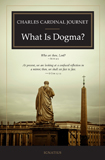Changes to International Theological Commission's Web Page?
/A Saturday press release by the International Theological Commission announces that it has “renovated, reorganized, and updated” its web page.
The ITC was instituted by Paul VI on April 11, 1969, following a proposal made by the first Ordinary Assembly of the Synod of Bishops. According to the ITC’s statutes, as set forth definitively in John Paul II’s apostolic letter Tredecim Anni of 1982 (since 1969 the statutes had only been provisory), ”[i]t is the duty of the International Theological Commission to study doctrinal problems of great importance, especially those which present new points of view, and in this way to offer its help to the Magisterium of the Church, particularly to the Sacred Congregation for the Doctrine of the Faith to which it is attached.”
The apostolic letter further explains that ”[t]he members of the International Theological Commission are appointed by the Supreme Pontiff, to whose judgment the Cardinal Prefect of this Sacred Congregation for the Doctrine of the Faith will make proposals, after having listened to the episcopal conferences. Such members are appointed for five years, after which they may be reappointed. They should not number more than thirty, except in particular cases.”
Tredecim Anni designates the Cardinal Prefect of the Sant’Uffizio as the president of the ITC. Currently that post is filled by William Levada, formerly Archbishop of San Francisco. The general secretary of the ITC is Serge-Thomas Bonino, OP, who was appointed only last year to take the place of Charles Morerod, OP, after the latter was made bishop of the Diocese of Lausanne, Geneva, and Fribourg in Switzerland.
Saturday’s press release does not make clear exactly what changes were made to the ITC page. (Hence, the question mark in the title of this post.) It says, for instance, that “the renovated web page of the Commission opens with a brief historical and institutional description (Profile).” The “profile” has always been a standard feature on the web pages of the various dicasteries of the Roman Curia and their affiliates. And I could be mistaken but I believe that the ITC page was not an exception. I seem to recall looking at the profile in the past.
The press release then goes on to describe other elements of the ITC page, most of which, I think, have always been there.
Are the links in a different order? Have some been consolidated? Were documents posted that had not been posted before? Are there new translations of some documents? No such details are given.
Regardless of what has been changed and what hasn’t, the three most valuable resources on the page are probably the digital versions of the ITC’s official documents, the papal addresses to the ITC, and the texts of the individual contributions of ITC members to its research.
The press release concludes by noting that it is the “lively hope of the Commission that the renovated web page might be a helpful and stimulating instrument for the consultation of documents by those who are interested, first of all bishops, theologians, priests and consecrated persons but also students and other faithful the world over, even where it is hard to come by [the Commission’s] publications.”
Perhaps one of our readers who is better informed on this subject could enlighten us as to what precisely has been changed on the ITC page.
***
UPDATE: One of Thomistica.net’s contributors, Robert Barry (Providence College), suggests that I use the Wayback Machine at the Internet Archive to compare the new ITC page with the old page to determine what changes were made (see RB’s comments below). I’m grateful for the tip but time travel makes me nervous. If I do decide to do it, perhaps I could offer to rewrite the ITC press release to make it more informative.


